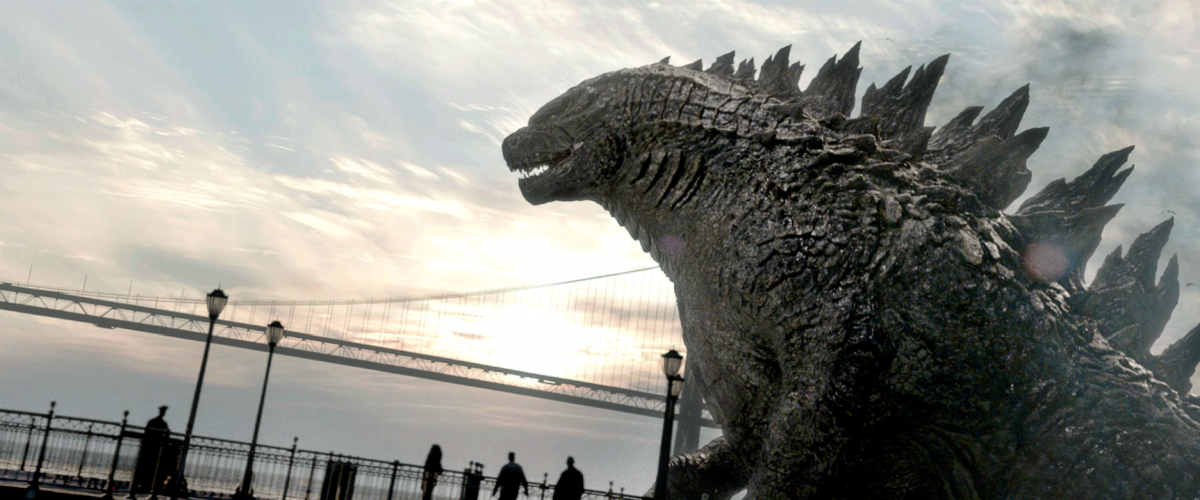
I left Godzilla feeling pretty much the same way I did when I left other CGI-dominated action flicks over the years: That the special effects were nifty (particularly nifty, in this case), the human characters woefully underdeveloped, some of the fight scenes too long (and too dark), and that the film took itself way too seriously.
So you can imagine my surprise when the reviews started rolling in and some of my fellow critics were hailing it as a masterpiece, the second coming of Steven Spielberg’s Jurassic Park (and even—gasp!—Jaws). What the what?
But then I looked at those reviews closer. Many of them were written by critics I greatly admire—Matthew Zoller-Seitz from rogerebert.com (and New York Magazine). Andrew O’Hehir from Salon, Chris Vogner of the Dallas Morning News. They had one rather obvious thing in common: They were all dudes.
Several of my fellow female critics: Stephanie Zacharek from The Village Voice, Betsy Sharkey from the LA Times, Dana Stevens from Slate (who gave the film a mild endorsement) felt more or less like me—“Cool monsters, bro”—and bemoaned the lack of interesting humans.
In conclusion: Men love Godzilla. Women, not so much. (And before you all pounce on me, yes, I know that some women liked Godzilla and some men, like The New York Times’ A.O. Scott, didn’t. Yeesh, can’t a woman traffic in broad gender stereotypes in peace?).
So why do dudes love Godzilla? Well, I’m not so sure. Massive, strong, hulking creatures are cool—especially when they seem to be on our side. The enduring myth of Godzilla is the myth of the monster who fights for us (maybe not intentionally—more like the enemy who breathes fire on our enemies is our friend.) Maybe all little boys at one point fantasized about having that kind of protector—or even being that kind of protector. (Okay, stepping away from the dime store psychoanalysis now.)
Director Gareth Edwards is playing with that mythology and he assumes, going in, that we’re all already Godzilla fanboys (or girls.) My audience was cheering for Godzilla like crazy, but I couldn’t help but to wonder: Once the big guy dispenses with the other scary radiation-fueled super monsters (in this film they’re called MUTOs—Massive Unidentified Terrestrial Organisms), what’s to stop him from turning on us?
There are people to help guide us through the film as the MUTOs swath their path of destruction through Tokyo, Honolulu, San Francisco, and (amusingly) Las Vegas. But they’re all generic: There’s the hunky action hero (Aaron Taylor-Johnson) who seems to have a knack for showing up exactly where the monsters strike next. There’s his beautiful and imperiled wife (Elizabeth Olsen). There’s the slightly deranged truth-teller (Bryan Cranston, who leaves the film way too early.) And there are the concerned scientists (Ken Watanabe and Sally Hawkins) who bemoan the “arrogance of man” and make a case for respecting the awesome power of nature. Perhaps the most interesting character is David Strathairn’s Admiral William Sentz, a military man who seems to have some genuinely conflicted feelings about blowing the monsters to bits. But none of these characters are developed, except for in the most rudimentary of ways.
As for comparisons to Spielberg? I get it: Edwards seems to love focusing on the awesome scope of these monsters, especially in comparison to us puny humans. More than one time, we see the monsters from the perspective of a wide-eyed child—a Spielbergian touch, indeed. But last I checked, Spielberg’s monster movies were exhilarating, funny, terrifying, and humane. Godzilla has a few exciting moments and an occasional joke lands, but it’s largely none of those things. But okay, yeah: Cool monsters, bro.
P.S. Since I referenced a zillion movies in this review and I’m too lazy to link to them all, here’s the Rotten Tomatoes page where I found most of them.
